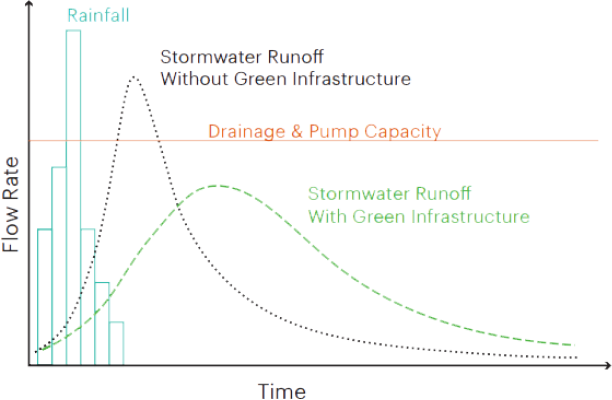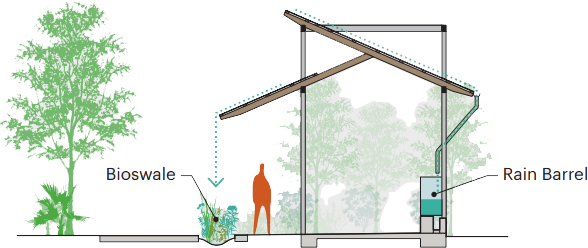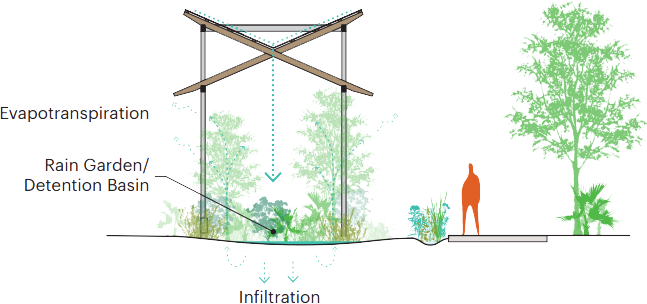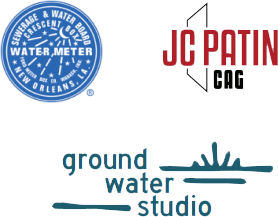
New Orleans has a forced drainage system. Rain that falls in the city is collected by pipes and pumped into Lake Pontchartrain. This system enabled urban development in areas that were once swamps and wetlands, but also led to subsidence which has caused much of the city to sink below sea level. The city is now dependant on pumps to remove stormwater.
The hydrograph below shows how long it takes stormwater to drain after a rain event. Urban areas with a lot of impervious surfaces like concrete convey stormwater very quickly. Too much water too fast can overload the capacity of the drainage system resulting in flooding. Green infrastructure helps alleviate flooding by slowing the flow of water to the storm drain, reducing the amount of water the pumps need to handle at the peak and spreading it out over a longer period of time.

Green infrastructure such as bioswales, rain gardens, permeable paving, trees, and rain barrels work to slow the water down, store it in rain barrels and detention ponds, and allow it to soak into the ground where it can become groundwater or evapotranspirated by trees. In addition to alleviating flooding, green infrastructure can provide other benefits such as shade, lower air temperatures, pollution reduction, wildlife habitat, and community health benefits.



The Hollygrove Greenline Stormwater Management Demonstration Site is owned and operated by Sewerage & Water Board New Orleans. This structure was originally constructed by Tulane University’s Albert and Tina Small Center for Collaborative Design. SW&B selected Allyson and Cedric Patin of CAG LLC
to re-design and build the site elements with a
sense of community. Together with groundwater studio
we welcome your enjoyment